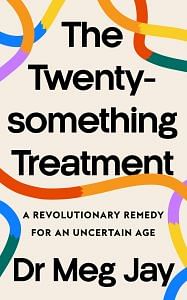In 1789, Benjamin Franklin famously said that nothing is certain except for death and taxes. While most people take this as a comment on, well, death and taxes, Franklin was pointing out that uncertainty has always been and will always be a big part of life.
Franklin wrote these words to scientist and friend Jean-Baptiste Le Roy, who was enduring the throes of the French Revolution. “It is now more than a year since I have heard from you. What can be the reason? Are you still living? Or have the mob of Paris mistaken the head of a monopolizer of knowledge, for a monopolizer of corn, and paraded it about the streets on a pole,” Franklin inquires in his letter before suggesting that his fledgling country, the United States, was also no sure thing. “Our new Constitution is now established, and has an appearance that promises permanency; but in this world, nothing can be said to be certain, except death and taxes.”
So, in the history of civilization, uncertainty isn’t new, but it is new for twentysomethings. Year after year, generation after generation, a new crop of young adults—those whose lives were once scheduled and structured by school—graduate into their twenties and into the great unknown. Before that, there were syllabi that told them exactly what to do and when to do it. There were grades that quantified where they stood and how they stacked up against their peers. There were yearly advancements that signified clear progress and an upward trend. Then, sometime around age 20, young adults trade a lifetime of school for the new world of work—or they try to—and they see nothing but uncertainty all around them.
Today’s young workers will have, on average, nine different jobs by the age of 35. Th at’s right: nine. Along the way, about half of young adults receive financial help from their parents, and about a fifth have bills that are unpaid and overdue. About a quarter of twentysomethings move each year, often to follow a job or to look for a better one. Meanwhile, about a third of workers now work from home, which for many twentysomethings is an overcrowded apartment with paper-thin walls. Sure, a fortunate few young adults may be globe-trotting digital nomads but for most, working remotely means migrating from coffee shop to coffee shop, with laptops and chargers in tow.
As coffee shops and jobs and cities and apartments come and go, friendships and relationships do, too. That’s why, although we may think of our twenties as an incredibly social time, they are in fact the loneliest years of all. About two-thirds of twentysomethings say they have no close friends; about half of twentysomething men and a third of twentysomething women are single, although about half of the unattached say they want more in friendship or love.
The percentage of young adults who will eventually marry is on its way down, however, and for those who choose to tie the knot, the average age to say “I do” is on its way up. Thirty is now the mean-average age to walk down the aisle or to stop by the courthouse, and it’s also the median-average age to have one’s first child. As families and careers and salaries are likely not established until one’s thirties, the average age of a first-time home buyer is at an all-time high of 36 years old. Still, because housing inventory is low and prices are high, owning a place of one’s own can feel more like a fantasy than a part of the American Dream.
Twentieth-century twentysomethings were likely to wake up to a spouse, a career, a baby, and maybe even a home and a purpose. These days, such sources of stability are more likely to be realized in one’s thirties and beyond—if at all. For many reasons, twenty-first-century young adults, like Irene, settle down later than earlier generations used to, which means that they’re likely to spend the first decade or so of adulthood feeling unsettled. And it’s not just young adult lives that are unsettled; the era in which they live is unsettling, too.
Today’s twentysomethings grew up in the shadow of 9⁄11 and the threat of terror raining down on a sunny day. Th ey went to classes amid more than 375 school shootings—and counting—since the year 2000. Hundreds of thousands of them have been exposed to gun violence, and nearly all of them know what it is like to crouch under their desks in an active-shooter drill. From there, they’ve moved on to the workplace, which may feel no safer. Work is the most common site for mass shootings, as well as where roughly 50 percent of women and 25 percent of men may one day say “Me, Too.”
Walking down the street amid cries that “Black Lives Matter,” some feel overwhelmed by the racial, social, and economic inequality they see on every corner. Going out in the evening after a reversal of Roe v. Wade, others feel they have lost control of their bodies and their choices. Watching politicians attack each other in the news, still others feel like children in a home with warring parents as they brace themselves for a national divorce. Coming of age during a pandemic, nearly all wonder if some of their best years and greatest opportunities were lost to lockdowns. And trying to envision a future under the cloud of climate change, many question whether they should bother at all to think ahead.
Every decade of life is difficult, but for twentysomethings, uncertainty is the most difficult part of all. According to Google, the word uncertainty was used in the English language at a rather steady rate until about the year 1950. From then on, it crept upward to a peak at around the year 2000, where it has remained ever since. Indeed, twenty-first- century twentysomethings, like Irene, are living with peak uncertainty in almost every way, and this has an indisputable, but vastly underrecognized, impact on their bodies and their brains.
 This excerpt from ‘The Twenty-something Treatment’ by Dr. Meg Jay has been published with permission from HarperCollins UK.
This excerpt from ‘The Twenty-something Treatment’ by Dr. Meg Jay has been published with permission from HarperCollins UK.






